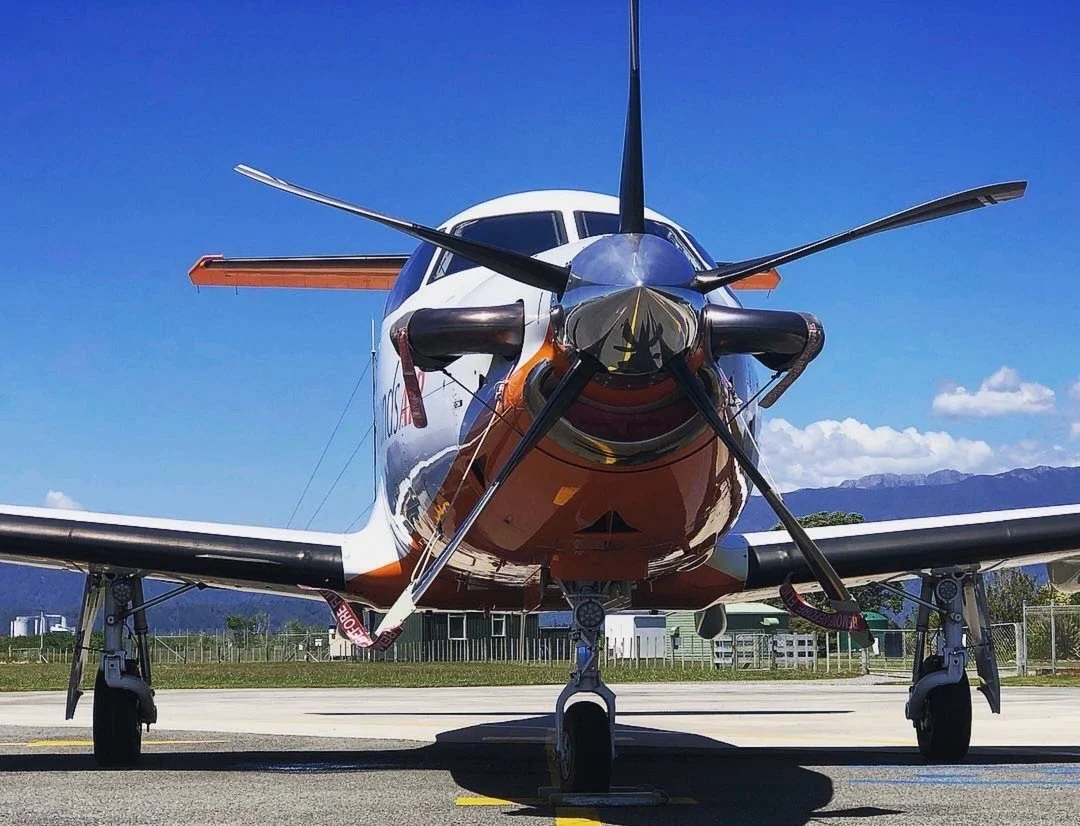Single Pilot SEIFR with Sounds Air
By Taylor Rhind, Sounds Air Chief Pilot
History/Overview
Sounds Air have been operating for over 37 years and have vast experience flying in and around the Marlborough Sounds, Cook Strait, Wellington and Nelson. Sounds Air was started by Cliff and Diane Marchant in 1987. They had a vision of providing low-cost inter-island transport to provide locals and tourists with easy access to the Marlborough Sounds.
Back in the late 1990’s the company fought hard to get SEIFR (Single Engine, Instrument Flight Rules) approved for passenger operations, and was meet with a lot of resistance. However, it was eventually pushed over the line, and this is the foundation of Sounds Air operations today.
Over the years, Sounds Air has moved away from strip flying in the Sounds and towards filling a gap left in New Zealand’s aviation sector for regional routes that can’t support the seat capacity of an Q300/ATR. Sounds Air operates four Cessna 208’s and Six Pilatus PC12’s. The company currently operates to 9 destinations and has 24 pilots based in Blenheim and Wellington.
Taking on the world - the little airline that can!
Recruiting Challenges
Operating Single Pilot under Part 125 comes with its own set of challenges. Approximately 98% of Sounds Air’s flights are IFR, and the Part 125 rules stipulate that pilots are required to have a minimum of 1200 hours total time (and several sub requirements).
With less pilots being trained over the COVID period and now as Airlines swinging back into action, the drive for pilots has meant the hour requirements of the larger airlines has dropped. With Airlines taking pilots sooner, there are less pilots available that have 1200 hours and haven’t yet taken an airline job.
Looking on the bright side, however, we see this as an opportunity to filter out and find pilots that really want the flying that Sounds Air offers - pilots that have purposely waited in GA/instructing jobs to gain these requirements. Recently, the company has been making an effort to encourage dialog with Pilots long before they get to the requirements. This hopefully enables potential candidates to weigh up their options at a time when they would be considering the airline route.
PC12 Cockpit
Extensive Training
Often pilots coming to Sounds Air are taking a big step in their career, moving from a mainly VFR operation and often from instructing. Over the years Sounds Air has built a training structure that supports its new pilots as they come up to speed with operating Single Pilot SEIFR. We start all pilots on ground crew duties. This really allows them to get to know the business, how all the systems work and gives them time to observe other line pilots and how they operate. New pilots start by only operating the C208. This allows them to build relevant Sounds Air experience before progressing onto the more complex aircraft.
After the ground period there is a comprehensive two-pilot line training program, where new pilots can do as many as 100 hours of two pilot ops before they are ready for their first solo flight. We also have a period after this training where new pilots continue to have the option of taking another line pilot along with them as they start to grow their experience.
The Sounds Air Pilot Experience
Sounds Air tries to provide training to give pilots the skills and experience to make decisions based on the situations at hand. Just like any company there are SOPs (Standard Operating Procedures) where required, but Sounds Air likes to allow pilots (and all staff) to make the decision they think is right, for the situation at hand (common sense). This helps create a work environment where staff play an important role and can make a difference but, more importantly, it means that staff become familiar with making decisions and coming up with solutions to problems. Then, when Staff encounter a situation that no one has predicted/put a policy/procedure in place for, they are confident dealing with the situation.
Although Sounds Air has moved away from its strip flying days, the flying is now rewarding in a new way, flying a complex turboprop aircraft, Single Pilot SEIFR in the unique and challenging New Zealand Weather!
The PC12 has 1200 horsepower and a pressurized cabin, giving awesome performance for a single engine aircraft allowing the pilot to have options when avoiding weather. The C208 fits perfectly into the role it is used for, on the shorter lower-level routes and is an great machine for high payload, but short take off and landing.
PC12
With a variety of aerodromes, all with their different challenges and mixture of C208 and PC12 operations, pilots get a roster which is varied and interesting.
Pilots that have been at Sounds Air for some time love the lifestyle. Being able to live in a small regional town (Blenheim), easy to get to and from work and often being home for the night…
We are still trying to figure out why people want to live Wellington!





